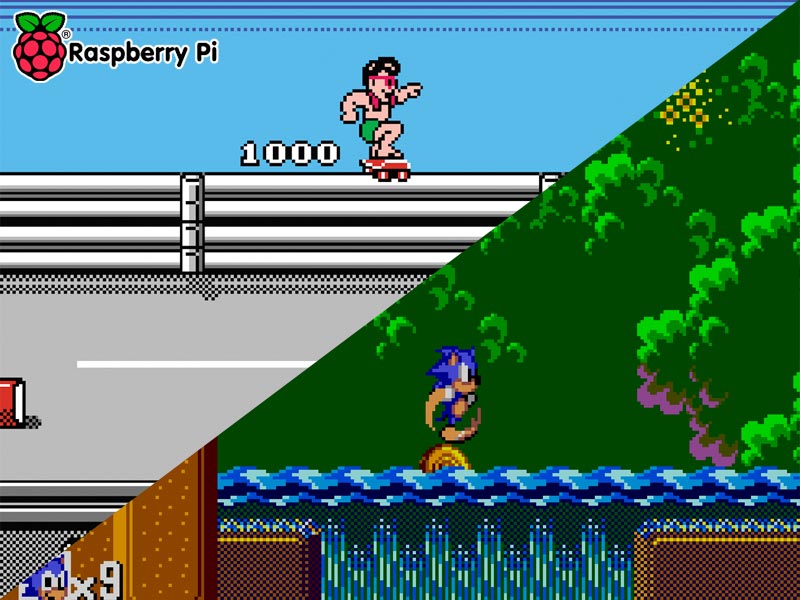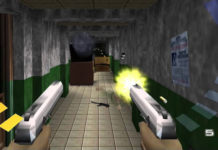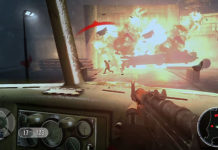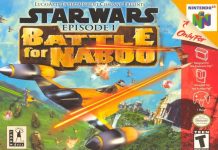The Joys of Collecting
In the retro gaming community, there’s a lot of discussion between retro collectors and retro gamers. Collectors are those who solely acquire classic gaming hardware, software, and miscellaneous items. These are the people who will pay hundreds to thousands of dollars for a terrible game, but because there are only five copies known to exist, they must have it. Gamers are those who are only interested in playing these classics, and it does not matter if it’s on the original hardware, a compilation disc, or some other method of emulation.
While I do have a modest collection, I limit myself to only the games that have a particular nostalgic meaning for me, or something that I know I will play. My NES collection is roughly 30 games, and I do not see it growing beyond that. My N64 collection is slightly larger, and while I initially set out with the idea of collection all 296 North American releases, I am winding down to just collecting the last few titles I will probably actually play: Majora’s Mask, Banjo Tooie, and Diddy Kong Racing. Topping it off at under 50 titles.
While I tend to collect for only these two systems, that leaves a large chunk of video gaming history left untouched. Either due to price (SNES) or not tickling my nostalgic balls as much as the other two systems (Genesis), I am content with not owning physical copies of my favorite games from these systems as long as I have some method of playing them.
I Love Pi
Enter the Raspberry Pi, a little computer costing just over $30.00. I do not want to get too much into the logistics of how this works, but those interested can easily Google it. At the end of the day, this little device scratches whatever nostalgic itch remains, or that could just be the crabs.
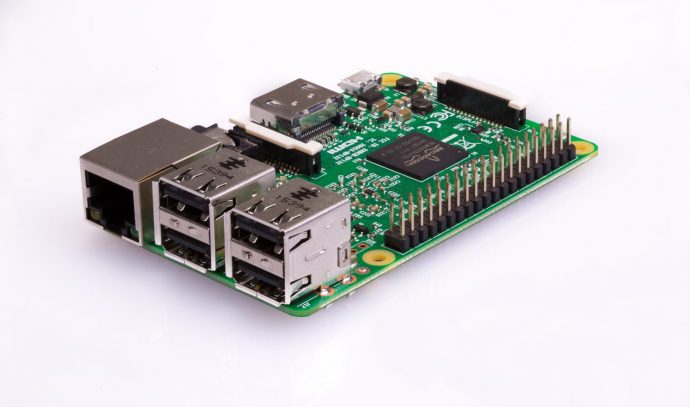
Some may argue the legality of playing on a Pi, but I fall on the side of preserving these games as an art form. I never hear anyone saying they’re ripping off Leonardo DaVinci for putting the Mona Lisa as the backdrop of their computer screen. Most of the games I play on the Pi are long out of print with no feasible method of playing them outside of the platform they were originally released on. Will ROMs and emulators ever replace playing the real game? Probably not, however, it’s close enough that any discrepancy is negligible.
The rub of the Raspberry Pi though is when I get to literally play any video game from a 20 year period, I tend to gravitate towards the same titles I already own because they are my favorite, leaving the other titles I am not as familiar with to digitally rot on the mini SD card. Therefore, I devised a plan to randomly play a title off of the Pi in order to enhance my appreciation of the hobby. Also known as Raspberry Roultette™.
T&C Surf Designs
I was excited when my method of closing my eyes and scrolling through the list of games landed on this one. It was a title I rented back when I was in Kindergarten, and I thought it was good when I was five years old. I had never really had a reason to revisit it, so why not now?

There are two main modes of playing this game. The first involves navigating a guy in a gimp mask or some Jersey Shore Guido down a boardwalk littered with obstacles on a skateboard. Apart from all the shit trying to fuck up your day, there’s also a time limit, so the player can’t just take his sweet ass time. To avoid the obstacles, the player can speed up, jump off his board to bypass roadblocks, or jump with the board in order to pass over large gaps. If the player is able to successfully navigate the level in the allotted time, they are rewarded with a slightly different level on their next run.
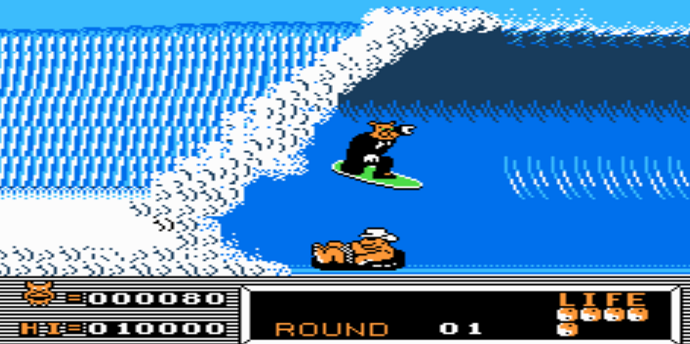
The next game mode is surfing or some shit. For this, the player will be either a cat in a tuxedo or a gorilla, tough call. I guess the idea is to pull off tricks on the board while fighting against the current, but damned if I could figure it out. Also, there’s some fat-ass in an inner tube. It reminded me of the Batman episode where Adam West was in a surf-off with the Joker, so it gets a half-star for that.
Originally, the idea of Raspberry Roulette™ was to spend an hour playing a game I wasn’t too familiar with, but after ten minutes, I was ready to bash my head into a wall. Rather than put a bloody hole in the drywall that would hurt the resale value of my home, I cued up another title.
Sonic the Hedgehog (Sega Master)
Growing up in the United States in the 80s and 90s, the NES was definitely the go to system for most children, but my neighbors up the road actually had a Master System for some reason.
Outside of Altered Beast and Spy vs. Spy, I remember no games that he had for it, and this system remained a mystery to me for years.
Years later, I learned of the near-Monopoly the Sega Master System had in Brazil and parts of Europe. Technically, the Master System is a more powerful system than the NES, but power means little without quality software. When the Game Gear launched, its specifications were basically that of a Master System, so numerous games released on Sega’s handheld were ported to the rotting 8-bit system.

I had played the Master System Sonic games briefly on the Sonic compilation disc on the GameCube, but I had primarily bought that for Sonic CD, which disappointed me more than my wedding night. I believe it also contained Sonic R, and the less said about that Holocaust of an Abortion, the better.
Anyway, I started up this version of Sonic and… I actually had a pretty decent time.
While it’s nowhere nearly as good as the Genesis version, it has a unique quality to it that feels familiar but new at the same time. All the components of a Sonic game are here: collecting rings, robotic enemies, going fast, colorful vistas, and boss battles against some guy who’s trying to deal with his E.D.
Graphically, it’s an impressive game. I’m not too familiar with the Master System and its capabilities, seeing as I only have three titles for it on my Pi, but I found it pleasing to the eye. However, I did experience some slowdown at random intervals, but that could be due to the emulation.
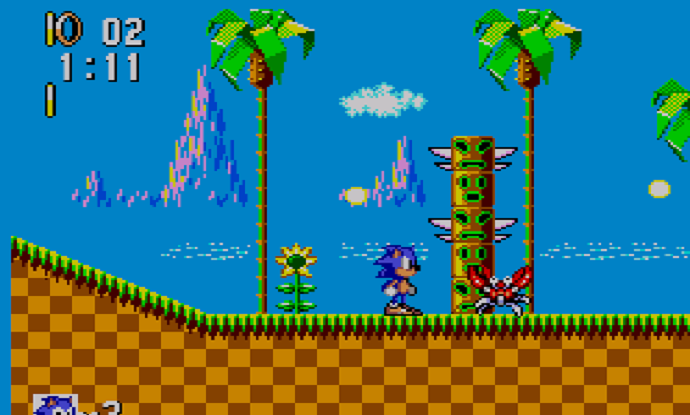
While the levels share some similarity with the Genesis version, the Master System version takes some deviations. I was sad to see no Marble Zone, as those are my favorite on the Genesis version, yet they decided to include the underwater Labyrinth levels (BOOURNS!). Also, there was an auto-scrolling level that felt out of place, and a vertical waterfall level that felt like a Contra rip-off.
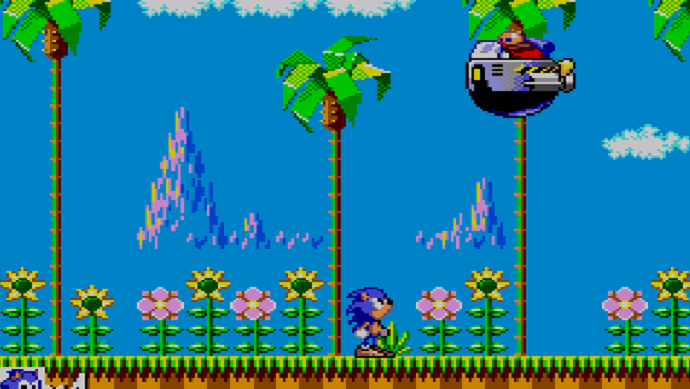
The special stages were not as imaginative as the Genesis version. Basically, they consist of bouncing around on springs. There are continue boxes that can be grabbed while in these areas, so it’s more than just collecting rings. Overall, I can take or leave this aspect of the game.
Looking at a walkthrough for the game, I made it about halfway through in my time playing it, and I hope to return to it sometime in the future. Sonic was my main factor for jumping ship from Nintendo to Sega back in 92, and playing this game is like discovering a lost classic I never knew about.
Unlocking The Past

As T&C Surf Designs proved, some titles are better left in the past, yet as the Master System version of Sonic proved, there are still a number of titles out there to be discovered.
Although I have played a lot of video games in my day, I have only experienced a sliver of the total pie. Luckily, thanks to the technology of today, getting exposure to these classics is as easy as Pi.

